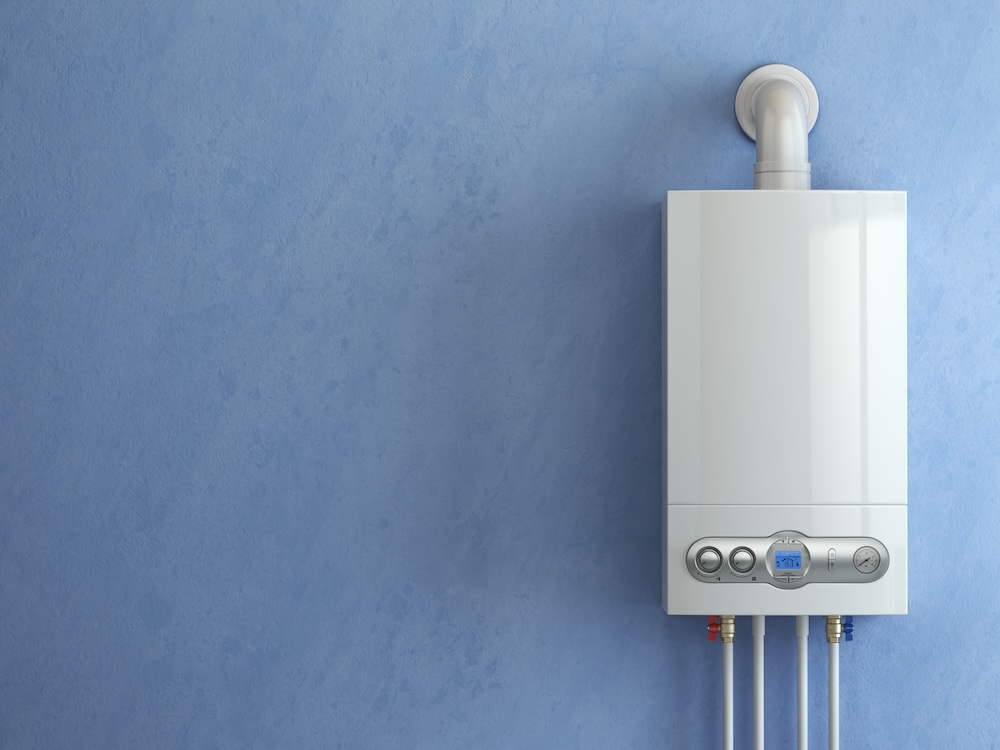What Is a Tankless Water Heater?
Tankless water heaters, also known as on-demand or instantaneous water heaters, are systems that heat water only when it is needed. Unlike traditional water heaters that maintain a constant reserve of hot water, tankless models eliminate the need for a storage tank, thereby reducing energy consumption.
These units heat water directly through an electric element or gas burner as it flows through the system. The result is a steady supply of hot water without the energy loss associated with continuously heating a stored tank of water.
Why Choose Tankless? The Environmental and Economic Advantages
Energy Efficiency
One of the most compelling reasons to switch to a tankless system is its superior energy efficiency. According to the U.S. Department of Energy, tankless water heaters can be 24–34% more energy efficient for homes that use 41 gallons or less of hot water daily. This efficiency translates to lower utility bills and reduced greenhouse gas emissions.
Reduced Carbon Footprint
Traditional tank heaters continuously consume energy to maintain water temperature. In contrast, tankless heaters only use energy during active operation, significantly reducing your home’s carbon footprint over time.
Longer Lifespan
Tankless units generally last longer than their traditional counterparts. While tank systems often need replacement after 10–15 years, tankless heaters can last up to 20 years with proper maintenance. Fewer replacements mean less waste ending up in landfills.
Space Saving Design
Compact and wall-mounted, tankless heaters save physical space and make them ideal for smaller homes or eco-conscious renovations where maximizing usable space is a priority.
Considerations Before You Install
Initial Cost and Installation
While tankless systems are more efficient, they come with higher upfront costs. Equipment and installation can range from $2,000 to $4,500 depending on the model and your home’s existing plumbing and electrical infrastructure. Despite the cost, long-term energy savings can offset the investment.
Retrofitting Requirements
Homes with older plumbing or limited electrical capacity may need upgrades to accommodate a tankless unit. It’s essential to consult with a licensed professional to assess feasibility and scope.
Flow Rate and Capacity
Tankless systems are sized based on flow rate, measured in gallons per minute (GPM). If you plan to run multiple appliances at once (e.g., shower and dishwasher), you’ll need a higher-capacity model. Selecting the right size ensures optimal performance without overloading the unit.
Eco-Friendly Practices to Pair with Tankless Systems
Low-Flow Fixtures
Installing low-flow showerheads and faucets helps you get the most out of your tankless water heater. These fixtures reduce water usage without sacrificing comfort.
Smart Controls and Timers
Smart thermostats and timers can help fine-tune your water usage. Some modern tankless systems integrate with home automation platforms, allowing you to schedule heating times or monitor usage.
Renewable Energy Pairing
For an even greener home, consider pairing your tankless heater with solar panels or a renewable energy subscription. This dual approach dramatically cuts emissions and utility costs.
Maintenance Tips for Peak Efficiency
Flush the System Annually
Mineral buildup from hard water can reduce efficiency. Annual flushing with a vinegar solution removes scale and keeps the system running smoothly.
Clean Filters and Check Vents
Filters should be cleaned quarterly, and venting inspected to ensure safe and efficient operation. A blocked vent can lead to safety hazards and performance issues.
Professional Inspections
Have a professional inspect the system every 1–2 years. Routine maintenance extends the life of your unit and ensures it operates safely and efficiently.
Common Questions About Tankless Water Heaters
- How long does a tankless water heater last?
With proper maintenance, up to 20 years or more. - Are tankless water heaters really more energy-efficient?
Yes, especially for homes with lower daily hot water usage. - Can I install a tankless water heater myself?
It’s not recommended unless you’re experienced with plumbing and electrical work. - Do they work in cold climates?
Yes, but models may require higher capacity or freeze protection features. - What size tankless water heater do I need?
That depends on your household’s peak water usage; a professional can perform a flow rate assessment. - Will I run out of hot water with a tankless heater?
Not unless you exceed the unit’s flow rate. Proper sizing prevents this issue.
Final Thoughts: Making the Sustainable Switch
Tankless water heaters offer a clear pathway to energy-efficient, eco-conscious living. While the initial cost is higher, the long-term savings—both financial and environmental—make it a worthwhile investment for those committed to sustainability. When paired with other green home practices like low-flow fixtures and renewable energy, tankless systems become a cornerstone of responsible modern living.
If you’re considering a greener upgrade for your home, a tankless water heater isn’t just a good choice—it’s a smart, sustainable one.









Reader Interactions